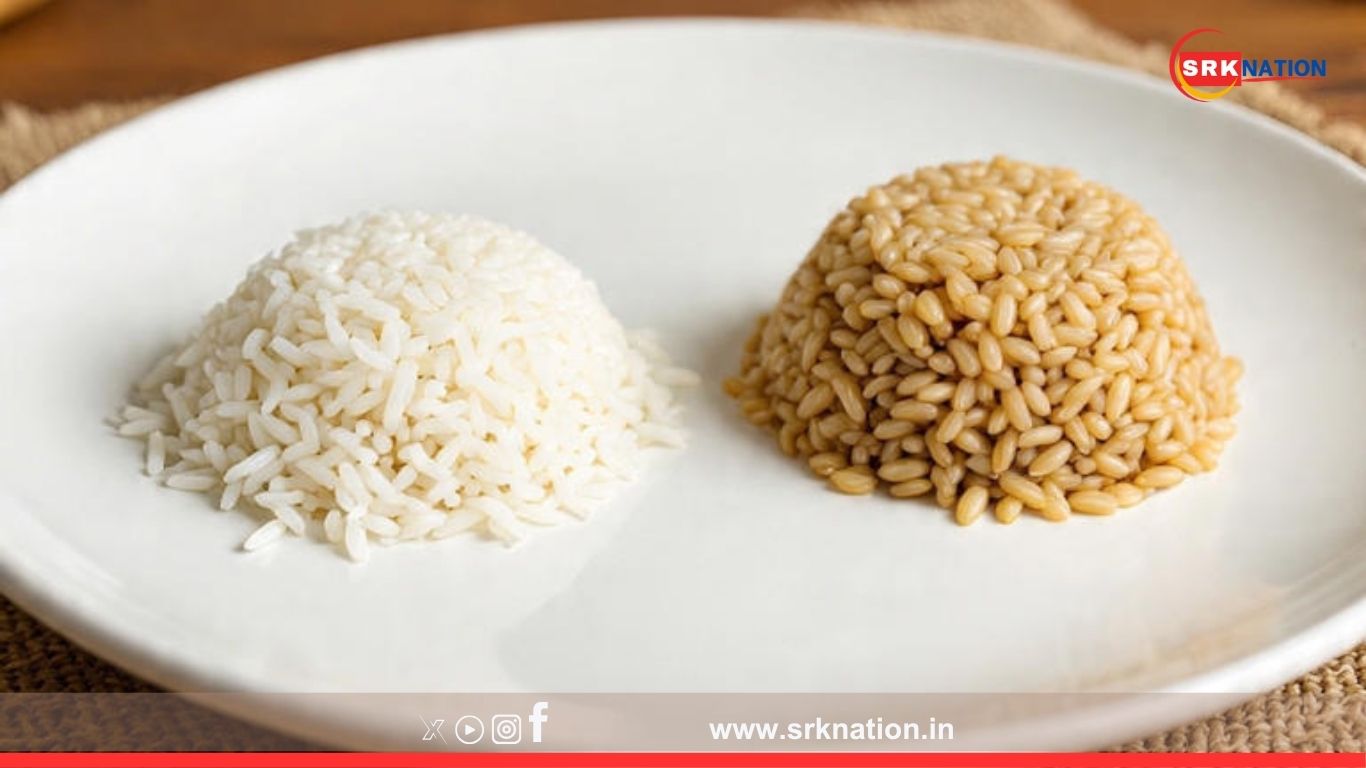Rice is a staple in Indian kitchens and global diets, forming the heart of countless dishes from biryani to sushi. Yet, a common health debate persists: Is white rice or brown rice healthier? Understanding their nutritional profiles, processing differences, and health implications can help you choose wisely for your lifestyle and fitness goals.
What is Brown Rice?
Brown rice is a whole grain rice with only the outermost inedible husk removed, retaining:
- Bran layer: Rich in fibre, minerals, and antioxidants.
- Germ: Contains essential fats, vitamins, and proteins.
- Endosperm: The carbohydrate-rich core also present in white rice.
What is White Rice?
White rice is brown rice milled and polished to remove both the bran and germ, leaving only the starchy endosperm. This processing:
- Increases shelf life by removing oil-containing germ (which can become rancid).
- Gives rice a softer texture and faster cooking time.
- Reduces its fibre and micronutrient content.
Nutritional Comparison Between White Rice and Brown Rice
| Nutrient (per 100g cooked) | Brown Rice | White Rice |
|---|---|---|
| Calories | 111 | 130 |
| Carbohydrates | 23g | 28g |
| Fibre | 1.8g | 0.4g |
| Protein | 2.6g | 2.4g |
| Fat | 0.9g | 0.3g |
| Magnesium | 44mg | 12mg |
| Phosphorus | 77mg | 43mg |
| Manganese | 0.9mg (45% RDA) | 0.4mg (19% RDA) |
| Glycemic Index (GI) | ~50 | ~73 |
(Data compiled from USDA and Indian Food Composition Tables)
Key Differences Explained
- Processing:
- Brown rice undergoes minimal milling, retaining nutrients.
- White rice is heavily milled and polished, losing fibre, vitamins, and minerals.
- Fibre Content:
Brown rice contains 3-4 times more fibre than white rice, aiding digestion, satiety, and blood sugar control. - Glycemic Index:
Brown rice has a lower GI (~50) compared to white rice (~73), causing slower blood sugar spikes, beneficial for diabetics. - Micronutrients:
Brown rice is richer in magnesium, manganese, phosphorus, selenium, and B vitamins (thiamine, niacin). White rice is often fortified with iron and folic acid in some countries. - Texture and Taste:
- Brown rice is chewier, nuttier, and takes longer to cook (35-45 minutes).
- White rice is softer, fluffier, and cooks faster (15-20 minutes).
Health Benefits of Brown Rice
- Weight Management: High fibre content increases satiety, reducing overall calorie intake.
- Blood Sugar Regulation: Slower carbohydrate absorption prevents sudden glucose spikes, aiding diabetic control.
- Heart Health: Rich in magnesium and antioxidants, supporting blood pressure and cholesterol reduction.
- Digestive Health: Promotes bowel regularity due to fibre content.
Health Considerations with White Rice
While white rice lacks fibre and some nutrients, it is:
- Easier to digest for those with sensitive stomachs, ulcers, or recovering from illness.
- Preferred in traditional dishes requiring fine texture (e.g. pulao, kheer).
- Quick energy source for athletes post-training due to rapid glucose release.
Potential Concerns With Brown Rice
- Phytic Acid (Antinutrient):
Brown rice contains more phytic acid, which can reduce absorption of zinc, iron, and calcium if consumed excessively without dietary diversification. - Arsenic Content:
Brown rice accumulates slightly higher levels of inorganic arsenic from soil compared to white rice. Washing thoroughly and varying grains can mitigate risk. - Digestive Tolerance:
Its high fibre may cause bloating in sensitive individuals if intake is increased suddenly.
Which is Healthier Overall?
| Factor | Brown Rice | White Rice |
|---|---|---|
| Fibre | High | Low |
| Vitamins & Minerals | Retained | Lost (partially fortified) |
| Blood Sugar Impact | Low | High |
| Weight Management | Supports | Less effective |
| Cooking Time | Longer | Shorter |
| Digestibility | Harder | Easier |
| Uses | Salads, bowls, slow-cooked curries | Quick meals, desserts, soft pulao |
Verdict:
Brown rice is nutritionally superior, offering fibre, vitamins, and minerals beneficial for heart health, digestion, and glycemic control. However, white rice is not unhealthy when eaten moderately, especially if accompanied by proteins and vegetables to lower glycemic impact.
Cardiologist and Dietitian Recommendations
Dr. Kunal Banerjee, Cardiologist:
“Switching to brown rice helps patients with borderline diabetes and metabolic syndrome. But portion control remains key, regardless of rice type.”
Ritika Samaddar, Clinical Nutritionist:
“Start by mixing brown rice with white rice for easier adaptation. Always soak brown rice for 30 minutes before cooking to improve digestibility.”
Tips to Maximise Benefits
- Combine with protein and fibre: Eat rice with dal, chicken, fish, or legumes and vegetables to lower glycemic load.
- Watch portions: Keep servings to half a cup cooked for weight or sugar management.
- Experiment with other whole grains: Replace part of your rice intake with quinoa, millets, or barley for varied nutrients.
- Proper washing and cooking: Rinse thoroughly and use excess water method to reduce arsenic and stickiness.
Cultural and Culinary Considerations
White rice remains integral to traditional dishes across India and Asia. From aromatic basmati biryanis to South Indian idli-dosa batters requiring polished rice for fermentation, cultural preference influences choice. Brown rice, though gaining popularity among urban health-conscious consumers, is still less used due to its texture and cooking time.
Conclusion
Both white and brown rice can be part of a healthy diet when eaten in moderation and balanced with vegetables, pulses, and proteins. For individuals aiming for weight loss, diabetes control, or heart health, brown rice offers distinct advantages due to its higher fibre, vitamins, and lower glycemic index. Ultimately, the healthiest choice is the one that fits your digestive tolerance, cultural habits, and overall balanced diet.
Disclaimer: This report is for general health information only and does not substitute medical or dietitian consultation. Consult professionals for personalised nutritional guidance.











